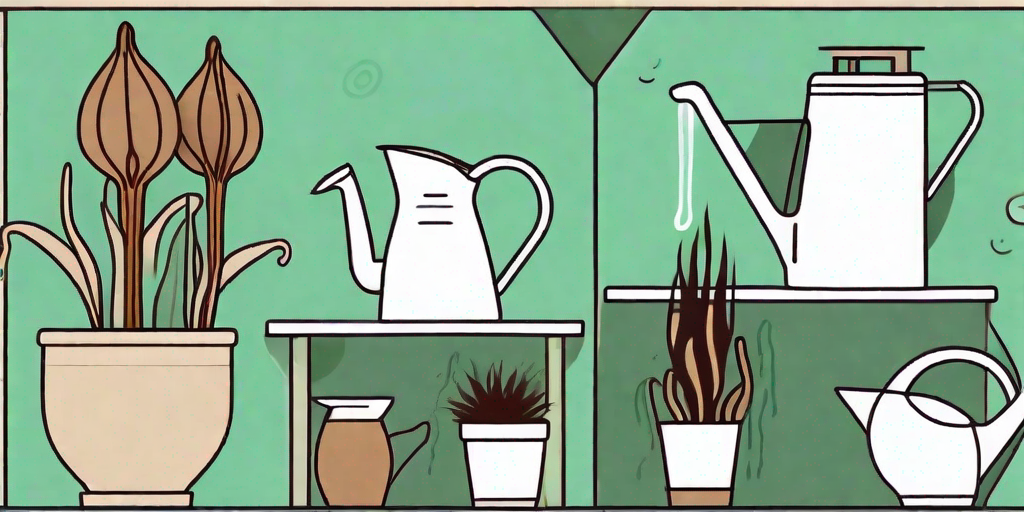
Pitcher plants are the divas of the plant world. They're beautiful, they're exotic, and they're a little high maintenance. But, like any diva, they're worth the effort. If your pitcher plant has started to turn brown, don't panic. It's not a death sentence. With a little TLC, you can bring your plant back to its vibrant, healthy self. Let's dive into the world of pitcher plant care and revival.
Understanding Your Pitcher Plant
What is a Pitcher Plant?
A pitcher plant is a carnivorous plant that traps and digests insects. It's a survival strategy that has evolved in nutrient-poor environments. The plant's leaves form a pitcher-like structure filled with digestive fluid, where unsuspecting insects meet their doom. It's a little gruesome, but hey, a plant's gotta eat.
There are several types of pitcher plants, each with its own unique characteristics. Some are climbers, some are ground-dwellers, and some even live in trees. But they all share the same basic structure and dietary needs.
Why is My Pitcher Plant Turning Brown?
There are several reasons why your pitcher plant might be turning brown. It could be a natural part of the plant's life cycle, or it could be a sign of stress. The trick is to figure out which one it is.
Like all plants, pitcher plants go through a period of dormancy. During this time, the plant's growth slows down, and it may lose some of its pitchers. This is completely normal and nothing to worry about. Your plant is just taking a little nap.
However, if your plant is turning brown outside of its dormancy period, it could be a sign of stress. This could be due to a variety of factors, such as improper watering, incorrect lighting, or poor nutrition. We'll get into these in more detail later on.
How to Revive Your Pitcher Plant
Step 1: Assess the Situation
The first step in reviving your pitcher plant is to assess the situation. Take a good look at your plant. Are all the pitchers turning brown, or just a few? Are there any other signs of stress, such as wilting or yellowing leaves?
Next, consider the plant's environment. Has anything changed recently? Have you moved the plant, changed its watering schedule, or introduced any new plants into its environment? Any of these factors could be causing stress for your plant.
Step 2: Adjust the Environment
Once you've assessed the situation, the next step is to adjust the plant's environment. This could mean changing the plant's location, adjusting its watering schedule, or tweaking its diet.
Pitcher plants prefer a humid environment, so if your home is dry, you might need to increase the humidity. This can be done by placing a tray of water near the plant, or by using a humidifier.
Watering is also crucial for pitcher plants. They prefer rainwater or distilled water, as tap water can contain minerals that are harmful to the plant. If you've been using tap water, switch to rainwater or distilled water and see if that makes a difference.
Step 3: Provide Proper Nutrition
Pitcher plants are carnivorous, which means they need a diet of insects to thrive. If your plant isn't getting enough to eat, it could start to turn brown.
You can feed your plant by placing a few insects in its pitchers every couple of weeks. Just make sure the insects are small enough to fit inside the pitchers. If you're squeamish about handling insects, you can also buy carnivorous plant food online or at your local garden center.
Preventing Future Problems
Proper Care is Key
Prevention is always better than cure, and this is especially true for pitcher plants. By providing your plant with the right care and environment, you can prevent many problems before they start.
This means giving your plant the right amount of light, the right type of water, and the right diet. It also means keeping an eye on your plant and addressing any issues as soon as they arise.
Know Your Plant
Every pitcher plant is unique, and what works for one plant might not work for another. The key is to get to know your plant and its needs. This will allow you to provide the best care possible and prevent any future problems.
FAQs
- Why are the tips of my pitcher plant turning brown?
This could be due to a lack of humidity or improper watering. Try increasing the humidity and switching to rainwater or distilled water.
- Can a brown pitcher plant be saved?
Yes, a brown pitcher plant can often be revived with the right care and attention.
- How often should I water my pitcher plant?
Pitcher plants prefer moist soil, but they don't like to be waterlogged. A good rule of thumb is to water when the top inch of soil feels dry to the touch.
So there you have it, plant lovers. With a little patience, a little knowledge, and a lot of love, you can save your pitcher plant and keep it looking fabulous. Now go forth and be the plant parent your pitcher plant deserves!















